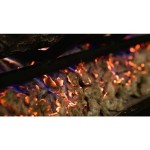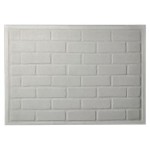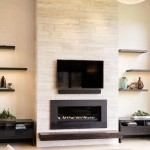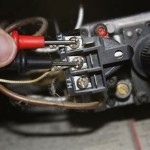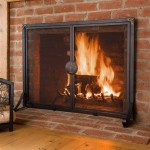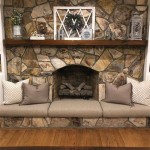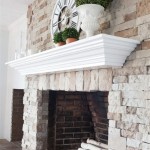Pilot Light Gas Fireplace: Understanding Potential Dangers
Gas fireplaces offer a cozy and inviting ambiance, providing warmth and aesthetic appeal to any living space. However, like any appliance that uses flammable fuel, gas fireplaces pose inherent risks if not properly maintained and operated. One crucial aspect of gas fireplace safety is understanding the role of the pilot light and its potential for danger if it malfunctions. This article will delve into the significance of the pilot light, explore potential hazards associated with its malfunction, and provide essential safety measures for all gas fireplace owners.
The Role of the Pilot Light
The pilot light in a gas fireplace serves as the ignition source for the main gas burner. It continuously burns a small flame, providing a constant source of heat to ignite the larger burner when the fireplace is turned on. The pilot light operates on a small gas supply, separate from the main burner, and is typically ignited by a spark generator or a manual lighter. The pilot light ensures a reliable and efficient ignition process, enabling the main burner to produce a steady and controlled flame for heating purposes.
Potential Hazards Associated with a Malfunctioning Pilot Light
While a well-functioning pilot light is essential for safe gas fireplace operation, a malfunctioning pilot light can present significant dangers. These hazards stem from the uncontrolled release of flammable gas, which can lead to a variety of issues. Here are some key potential hazards:
1. Gas Leaks and Accumulation
A malfunctioning pilot light, such as a persistent flame or a pilot that keeps going out, can indicate a gas leak. This leak can result in the accumulation of flammable gas within the fireplace and the surrounding area, posing a serious fire hazard. The gas leak can be undetected and create a potentially explosive environment if not addressed promptly.
2. Unintentional Ignition
The accumulated gas from a leaking pilot light can be ignited by a spark or flame source, leading to a sudden and uncontrolled explosion. This explosion can cause significant damage to the fireplace, the surrounding structures, and potentially injure individuals nearby. Even a small spark from a nearby electrical appliance or static discharge can ignite the flammable gas, creating a dangerous situation.
3. Carbon Monoxide Poisoning
Carbon monoxide is a colorless, odorless, and tasteless gas produced during the incomplete combustion of fuels, such as natural gas. A malfunctioning pilot light, particularly if it is not producing a consistent blue flame, can release carbon monoxide into the atmosphere. This toxic gas can lead to carbon monoxide poisoning, causing symptoms such as headache, dizziness, nausea, and even death.
Safety Measures for Gas Fireplace Owners
To mitigate the potential dangers associated with the pilot light, gas fireplace owners must prioritize regular maintenance, proper operation, and safety awareness. Implementing the following measures can minimize risks and ensure a safe and enjoyable fireplace experience:
- Regular Inspections and Maintenance: Schedule annual inspections by a qualified technician to ensure the pilot light is functioning correctly and there are no gas leaks. This includes checking the pilot light assembly, gas lines, and ventilation system.
- Promptly Address Malfunctions: If you notice any problems with the pilot light, such as a flickering flame, a pilot that repeatedly goes out, or an unusual odor, stop using the fireplace immediately and contact a licensed gas technician for assistance. Never attempt to repair or adjust the pilot light yourself.
- Proper Ventilation: Ensure adequate ventilation by keeping the fireplace's damper open when in use. This allows for proper airflow and prevents the accumulation of dangerous gases within the house.
- Install and Maintain Carbon Monoxide Detectors: A carbon monoxide detector can alert you to the presence of this potentially deadly gas in your home. Install a detector on every level and near sleeping areas and test them regularly.
- Safety Precautions During Operation: Always follow the manufacturer's instructions for operating the fireplace. Do not leave the fireplace unattended while in use and never use flammable liquids to help ignite the pilot light.
- Educate Family Members: Instruct all household members on the potential hazards associated with gas fireplaces, the proper operation of the fireplace, and the importance of promptly reporting any problems or unusual observations to a responsible adult.
By adhering to these safety measures, homeowners can minimize the risks associated with gas fireplaces and enjoy the warmth and ambiance they provide safely.

Pilot Light Safety In Utica Ny Fred F Collis Sons

How To Test If Your Pilot Flame Is Bad Www Mygasfireplacerepair Com

Should I Turn The Pilot Light Off During Summer

Should I Leave My Gas Fireplace S Pilot On Or Off During Summer

See The Pilot Light Proper Ventilation Of Exhaust Gases Is Crucial To Indoor Air Quality A Healthier Home

How To Test Your Thermopile Www Mygasfireplacerepair Com

Risk Of Explosion With Certain Gas Fireplace Models Ofm Muskoka411 Com

Why Your Pilot Light Keeps Going Out How To Fix With S

Should I Keep The Pilot Light Burning On A Gas Fireplace Ehow

Knowledgebase Ventless Gas Logs Fireplaces Inserts Stoves And Accessories By Com Specializing In

